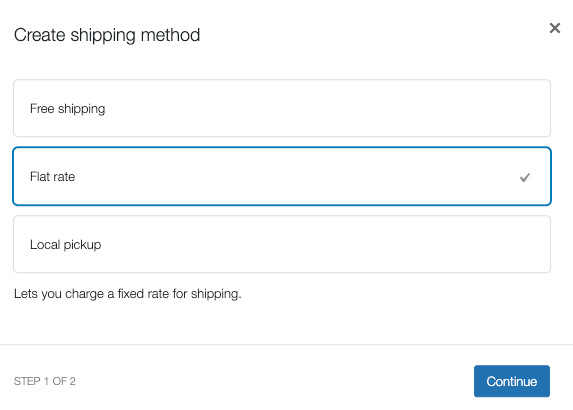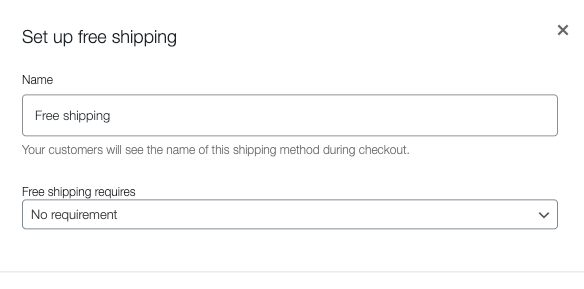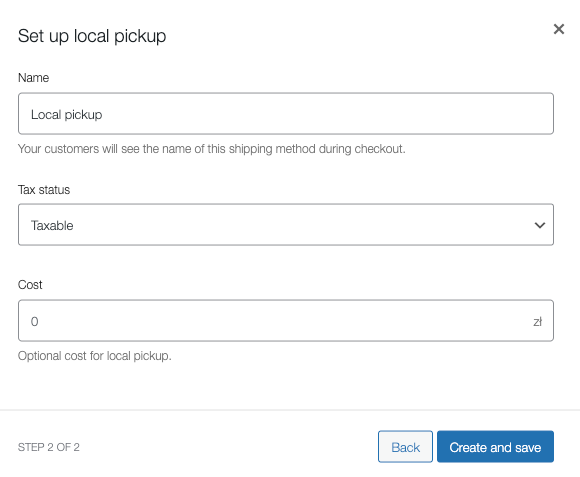
Subscribe to our newsletter

For WooCommerce store owners, offering the right delivery options can mean the difference between a completed order and an abandoned cart. If you’re looking to offer more flexibility, accuracy, and control over how your store handles deliveries, explore extra shipping options for WooCommerce. While WooCommerce provides basic shipping functionality out of the box, it’s not always enough to meet the needs of growing businesses or those offering complex logistics.
Whether you want to offer different rates based on product weight, apply free shipping over a certain cart value, charge extra for remote locations, or display real-time courier prices, you’ll quickly discover that the native WooCommerce shipping methods have their limitations.
In this guide, we’ll explore:
If you’re looking to make your shipping setup more flexible, accurate, and more aligned with your business operations, this article is for you.
WooCommerce comes with a set of basic shipping methods that work well for simple stores. These native options allow you to create shipping zones and assign different methods based on the customer’s location. The three default shipping methods are:
These methods are straightforward to configure and offer a solid foundation for basic store setups. However, they fall short when your shipping strategy becomes more complex. For example, if you need to calculate rates by weight, quantity, destination, or offer live courier pricing.
Let’s discuss all available shipping methods.
Flat Rate Shipping is one of the core native shipping methods built into WooCommerce. As the name suggests, it allows store owners to charge a fixed shipping cost for each order, item, or shipping class, regardless of the destination or cart contents.
This method is ideal for stores with straightforward logistics or those selling products with predictable delivery costs. For example, if you sell standardized items like books, small accessories, or digital products bundled with physical components, Flat Rate Shipping provides a quick and easy solution.
To configure Flat Rate Shipping, navigate to WooCommerce → Settings → Shipping → Shipping Zones. Choose an existing shipping zone or create a new one, then click “Add shipping method” and select “Flat rate.”

Once added, click “Edit” to customize the method according to your needs. You can define the method title (as seen by the customer during checkout), decide whether tax is applied, and set the base shipping cost.

The shipping cost can simply be a fixed amount, but you can also use advanced Flat Rate Shipping cost calculations. With advanced calculations, you can configure Flat Rates based on the quantity of items in a cart or a percentage of the total order costs.
The cost field accepts both fixed values and dynamic placeholders. For example, entering 10 will always charge $10 per order, but you can also use variables like [qty] (number of items in the cart), [cost] (total cost of items), or shipping class costs. A formula like 10 + (2 * [qty]) will charge a base rate of $10 plus $2 for each item in the cart, giving you some level of flexibility while keeping the logic simple and manageable.
Despite its simplicity, Flat Rate Shipping is not flexible enough for many real-world use cases. It lacks conditional logic and doesn’t take into account:
Free Shipping is another core shipping method in WooCommerce and one of the most powerful tools to improve conversion rates and customer satisfaction. Offering free shipping, whether sitewide, conditionally, or only within specific regions, is often used as an incentive to encourage larger purchases, reduce cart abandonment, and simplify the checkout process. While it may seem simple, WooCommerce gives you flexible control over how and when free shipping is applied, making it an essential part of your shipping strategy and a foundation for any Extra Shipping Options for WooCommerce.
To enable Free Shipping, go to WooCommerce → Settings → Shipping → Shipping Zones. Choose or create a shipping zone, click “Add shipping method,” and select “Free shipping.”

After adding the method, click “Edit” to define when it should be available.
Free Shipping in WooCommerce can be activated under one of four conditions:

You can customize the method title to clearly communicate the offer (e.g., “Free Shipping on Orders Over £50”) and decide whether to stack it with other methods in the same shipping zone.
This shipping method works well for many shops, but it has its limitations. You can’t define nuanced pricing structures or add dynamic charges based on weight, item count, or delivery time. If your store requires conditional rules (e.g., free shipping only for lightweight items), or if you want to apply surcharges for specific postcodes or shipping classes, this method alone won’t be enough.
Local Pickup is another core shipping method available in WooCommerce by default. It allows customers to place an order online and collect it in person, either from your physical store, warehouse, or designated pickup point. This method is particularly useful for brick-and-mortar businesses, local sellers, or hybrid fulfillment models where in-person handover is part of the customer journey.
Enabling Local Pickup in WooCommerce is straightforward: when adding a shipping method to a zone, you can select “Local Pickup” from the list. You can also assign a custom title for display at checkout (e.g., “Collect in-store” or “Pickup at warehouse”), and optionally apply a flat fee for the service. This fee might represent packaging, handling, or operational costs related to preparation.

Despite its simplicity, Local Pickup comes with a few notable limitations. You can’t define complex conditions such as allowing pickup only for specific products, categories, or order totals. Additionally, WooCommerce doesn’t provide an out-of-the-box solution for offering multiple pickup locations or assigning pickup points dynamically based on customer address or stock availability. These limitations become especially evident for larger stores or businesses with multiple physical locations.
Are you interested in offering pickup points in your store? Watch our video about this topic:
While the default WooCommerce shipping methods (Flat Rate, Free Shipping, and Local Pickup) are sufficient for simple stores, they often fall short for businesses with more complex logistics needs. If you’re looking to offer flexible, accurate, and scalable shipping options, it’s time to explore Extra Shipping Methods in WooCommerce.
In this part of the guide, I’ll take a closer look at two powerful solutions: Table Rate Shipping, which gives you full control over rule-based shipping costs, and Live Rates, which dynamically calculate real-time shipping prices from major carriers. These methods can significantly enhance your store’s delivery strategy.
When default shipping methods fall short, Table Rate Shipping offers the flexibility and precision needed for complex WooCommerce logistics. It enables you to define shipping rules based on multiple factors, such as cart weight, item count, order total, or shipping classes. It makes it one of the most powerful components in your toolbox of Extra Shipping Options for WooCommerce.
Table Rate Shipping is one of the most flexible and powerful shipping methods available for WooCommerce. Instead of offering a single, flat shipping rate or relying on broad rules, it allows you to build dynamic shipping scenarios based on customizable conditions. The idea is simple: define a set of rules (a “table”) that determine how much a customer should pay based on what they’re buying, where they’re located, how much it weighs, and more.
With Table Rate Shipping, you can charge shipping costs based on almost any variable relevant to your store. Want to apply different rates depending on the total cart weight? You can do that. Need to set specific prices for orders to certain zip codes or countries? No problem. Prefer to offer free shipping for orders over a certain value, but only within a specific region? Table Rate Shipping handles that too.
In reality, the possibilities are nearly endless: the only limit is the flexibility of the plugin you choose. That’s why we created Flexible Shipping plugin. It allows you to create almost any shipping scenario you can imagine. As one of the most advanced Table Rate Shipping solutions for WooCommerce, it lets you create multiple condition-based rules, offering incredible control over your shipping logic.
The best Table Rate Shipping for WooCommerce. Period. Create shipping rules based on weight, order totals or item count.
View Details or Add to cartFlexible Shipping supports conditions such as:
One of the biggest advantages of Table Rate Shipping is how adaptable it is to real-world logistics. You can create tailored shipping strategies that reflect your unique business needs and customer expectations. Below are some of the most common and powerful scenarios you can implement using Table Rate Shipping in WooCommerce.
Need to offer different shipping options depending on the time of day or day of the week? For example, you might want to offer express delivery only on weekdays or restrict same-day shipping to orders placed before noon. With Table Rate Shipping, you can implement such time-sensitive conditions and match customer expectations with accurate delivery promises.
Learn how to configure it step by step in this guide: WooCommerce Shipping Based on Time
Some products are small and light, while others are bulky or oversized—and your shipping strategy should reflect that. Using Table Rate Shipping, you can differentiate rates based on product dimensions, applying surcharges or special handling fees for items that exceed specific size thresholds.
See how it works in practice: WooCommerce Shipping by Product Size
Selling multiple products per order? With Table Rate Shipping, you can set quantity-based pricing tiers, such as charging a base fee for the first item and an additional cost for each extra product in the cart. This is particularly useful for wholesale stores, subscription boxes, or sellers of small, stackable goods.
Discover how to implement it: WooCommerce Shipping Based on Number of Items
This is one of the most common use cases. Whether you want to offer tiered pricing based on total cart weight or set different rates per kilogram or pound, Table Rate Shipping gives you full control over your weight-based shipping logic. It’s a must-have for stores dealing with heavy goods, raw materials, or volume-based delivery pricing.
Follow the full tutorial here: WooCommerce Weight-Based Shipping – Step by Step
If you operate locally or have access to fast courier services, Table Rate Shipping allows you to offer premium delivery services, such as same-day or next-day shipping, often based on cart value, product type, or postcode. These methods can boost conversion and customer satisfaction for time-sensitive orders.
Learn how to set it up: How to Offer Same-Day or Next-Day Shipping in WooCommerce
These are just a few examples of what’s possible with a well-optimized Table Rate Shipping strategy. From simple tiered pricing to highly specific conditional rules, this method provides the scalability and control required by modern ecommerce stores.
Got a unique shipping case? There’s a good chance Table Rate Shipping can handle it.
While Table Rate Shipping gives you full control over your pricing logic, there are scenarios where manually managing shipping rules isn’t the most efficient approach. Live Rates are a completely different, but often more convenient solution. With this method, shipping costs are calculated dynamically in real-time, based on actual data from carriers such as DHL, UPS, FedEx, USPS, Royal Mail, or DPD.
Live Rates are perfect for WooCommerce stores that want to automate their delivery pricing, especially when working with multiple couriers, international orders, or a large variety of parcel dimensions and weights.
Live Rates rely on API integrations with shipping carriers. When a customer enters their shipping address during checkout, WooCommerce communicates with the selected carrier’s API to retrieve real-time pricing and service options. These are based on:
This approach eliminates the guesswork of shipping calculations. Customers always see the latest available rates with accurate ETAs and service descriptions.
One of the main benefits of Live Rates is that you no longer have to manually update shipping prices when carriers change their rates. Everything is synced automatically, which helps avoid overcharging or undercharging. It also builds trust with your customers by offering official courier services directly in the checkout.
You can also provide multiple delivery options from a single carrier. For instance, for UPS Live rates, you can offer UPS Standard, UPS Express Saver, and UPS Next Day Air, and let the customer decide which suits their timeline and budget best.
Additionally, Live Rates plugins often let you:
Use Live Rates when:
Use Table Rate Shipping when:
The good news is that you don’t have to choose between Live Rates and Table Rate Shipping: you can combine both in a single, seamless setup. Thanks to the latest update of the Flexible Shipping plugin, it’s now possible to display real-time courier rates alongside your custom shipping rules based on weight, cart value, or product quantity. This gives you unmatched flexibility: use Live Rates for accurate international shipping and Table Rate for local delivery, promotional offers, or complex logic that carriers don’t support. It’s the best of both worlds: automated where it matters, custom where it counts.
Choosing the right shipping strategy is essential for any WooCommerce store aiming to grow, improve customer experience, and stay profitable. While the built-in methods like Flat Rate, Free Shipping, and Local Pickup provide a solid starting point, they often fall short when your logistics become more complex. That’s why you should consider using extra shipping options for WooCommerce. By implementing solutions like Table Rate Shipping and Live Rates (or even combining both) you unlock the ability to create flexible, dynamic, and highly customized shipping rules tailored to your business.